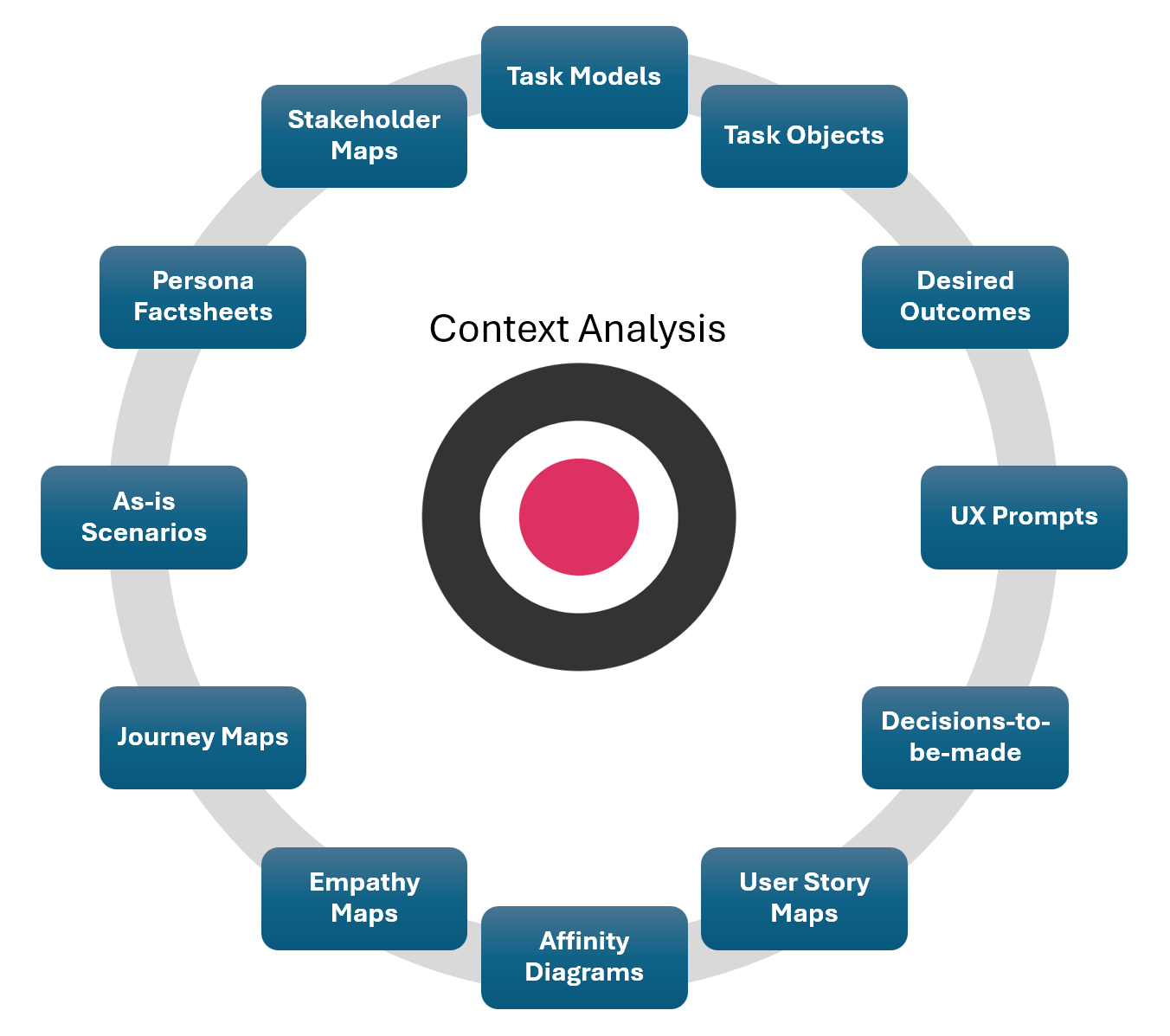Redefine Your UX Research Workflow
Unlock three new, fast, and scalable research workflows
UX Research-as-a-Digital Service
Run user research in minutes to serve your product team with professional user research outputs.
Self-Service UX Research
Generate your own user insights for any product context without needing to request user research support.
UX Prompt-as-a-Servcie
Fuel your generative UI tools with auto-generated prompts that specify user requirements for your vibe design.
Continuous UX Research For Everone
Turn every team member into a context-driven problem solver.
As a User Researcher
Automate LLM-based discovery and analysis to reduce dependencies on direct user access and limited research budgets.
As a Product Manager
Generate timely, actionable design inputs while minimizing dependence on user research capabilities.
As a Business Analyst
Boost productivity with pre-generated user stories tied to detailed task flows, helping avoid feature-centric product design.
As a Front-end Developer
Generate use scenarios, detailed task flows, and task objects for the next screen you build to gain a deeper understanding of the user context.
As a Documentation Developer
Use the output of the context analysis to create more authentic and detailed documentation that reflects the language and concept model of your users.
As an AI-Agent Designer
Identify automation opportunities through detailed descriptions of all decisions-to-be-made related to a task domain.
Effortless Interview Analysis
Automatically extract and structure content from your interview transcripts
Upload your interview transcript ...
Previously, you had to set aside a significant amount of your time,
in addition to the interview itself, to capture and document all relevant information.
Now, you can utilize AI to automate this process, freeing up time
that would otherwise be spent on interview post-processing.
>>>>>
... and get back a structured context model
In addition to the standard interview summary and a list of design concepts
that emerged during the interview, you will receive a structured context of use model
that incorporates all of the information discussed in the interview.
This model can be accessed and interactively browsed online.
One Research Prompt Delivers It All
Generate professional research deliverables at the speed of agile
Context of Use Analysis
Get a complete description of all stakeholders and their responsibilities, tasks, goals, and pain points to gain a comprehensive understanding of the targeted domain.
In-Depth Task Analysis
Explore all responsibilities, tasks, and subtasks to identify meaningful task bundles and task flows.
Interview Analysis
Upload your transcript and get a well-structured context of use description reflecting what stakeholders, tasks, and painpoints have been mentioned in the interview.
Cognitive Task Analysis
Get a list of cognitive tasks that could be supported by intelligent system agents in the form of automated decision loops.
Affinity Diagrams
Get key topic areas for pain points and desired outcomes to understand what your design should focus on.
Task Objects
Get a list of task objects and required resources that are created or utilized within a task to develop a conceptual model.
Personas
Get a description, day-in-life scenario, and empathy map of a a persona to better understand the point of view your typical user.
Detailed Task Flow
Get a detailed list of subtasks for each task to understand the user flow and necessary steps to achieve the intended outcome.
Journey Maps
Get comprehensive journey maps that list all the stakeholders, tasks, and pain points for each phase of a larger process to understand the big picture.
Stakeholder Factsheets
Get profiles of all stakeholders that are directly or indirectly related to your product context.
User Story Maps
Get consistently written user stories or user requirements to inform and evaluate your product design.
As-is Scenarios
Get narrative description of how a user is performing a task to better understand the point of view of a user.
Stakeholder Maps
See all stakeholders at a glance grouped by their engagement level to identify indirect and secondary user groups.
UX Prompts for Vibe Design
Use well-structured outputs directly as input for your generative UI tools to set the foundation for user-centered design.

RUN YOUR RESEARCH
with Product Context Analyzer
Focus on interviewing
and delegate the analysis
Become a Product Context Analyst
Be an expert on what your users actually need to achieve their desired outcomes.
"I am convinced that the information generated can save us a lot of work
when planning and documenting a context of use analysis because
the presentation of the results is very detailed and clearly structured.
In addition, the tool also helps me to evaluate, complete and verify existing results
from manual context of use analyses."
Philipp Kirsten - Usability Engineer
(Heidelberg Engineering)
"I train designers from around the world and design teams at Fortune 100 companies
how to use AI tools. Product Context Analyzer is a uniquely powerful addition to my AI training toolkit.
The amount of detailed high-quality user journey information it provides in a matter of minutes
would take me 3 or 4 days to create on my own."
Greg Aper - Design Consultant & Speaker
(superunknown.design)
"What I really liked were the personas identified as this was really complete.
I also liked the well-structured content which would serve as a perfect kick-start
and identify the gaps that need to be explored in more detail.
I think this tool would save you 20 to 40% of the time you'd spend on documenting customer use cases."
Principle Solution Architect
(Anonymous Beta Tester)
Subscription Plans
Flexible monthly or annual plans for radically accelerating your UX research.
Free Trial
Sign-up and test Product Context Analyzer with your own use cases for 30 days.
free 30 days
limited to new users
Includes 100 research credits*
- All features included
Professional
Automate labor-intensive steps within your user research, analysis, and synthesis.
starting from 40 USD
per month with annual plan
Includes 100 research credits*
- Context Discovery
- Interview Analysis
- Stakeholder Analysis
- Task Analysis
- Requirements Analysis
- Generation of User Stories
- Generation of Key Insights
Enterprise
Standardize context discovery and user requirements spefication across all teams.
Contact Sales
info@context-analyzer.com
Revolutionize your traditional user research and accelerate and scale your user research across your entire product portfolio.
*We use credit points as a unit for charging the AI power needed to analyze a product context. One credit covers approximately corresponds with the analysis of one task. Credits points included in the subscription expire with each subscription period. Additional research credits are available to purchase to cover more demand.
About us
Our executive team consists of senior experts and executives in the field of requirements engineering and leading UX organizations.
Jörg Beringer (CEO)
Jörg Beringer has decades of international leadership experience
roles as UX Chief Architect and Chief Design Officer. He is advising
companies on their digital transformation journey to cloud, big data,
and artificial intelligence.
Thomas Geis (COO)
Thomas Geis has been actively engaged in software and hardware
development projects for over 30 years. He has been analyzing
hundreds of business contexts from the perspective of product users
over long years, working for product manufacturers around the globe.
Product Context Analyzer
ProContext Inc.
377 Roble Ave
Redwood City
CA 94061, USA
Contact
